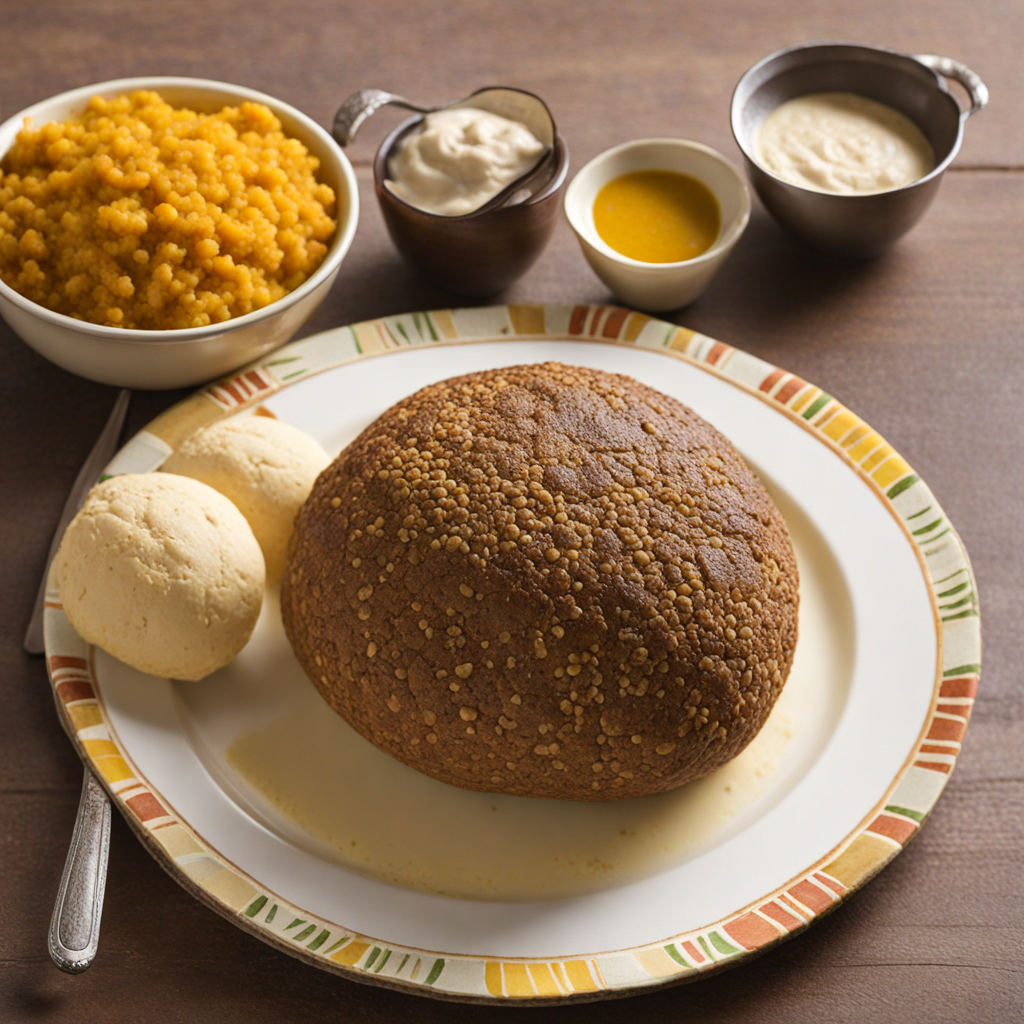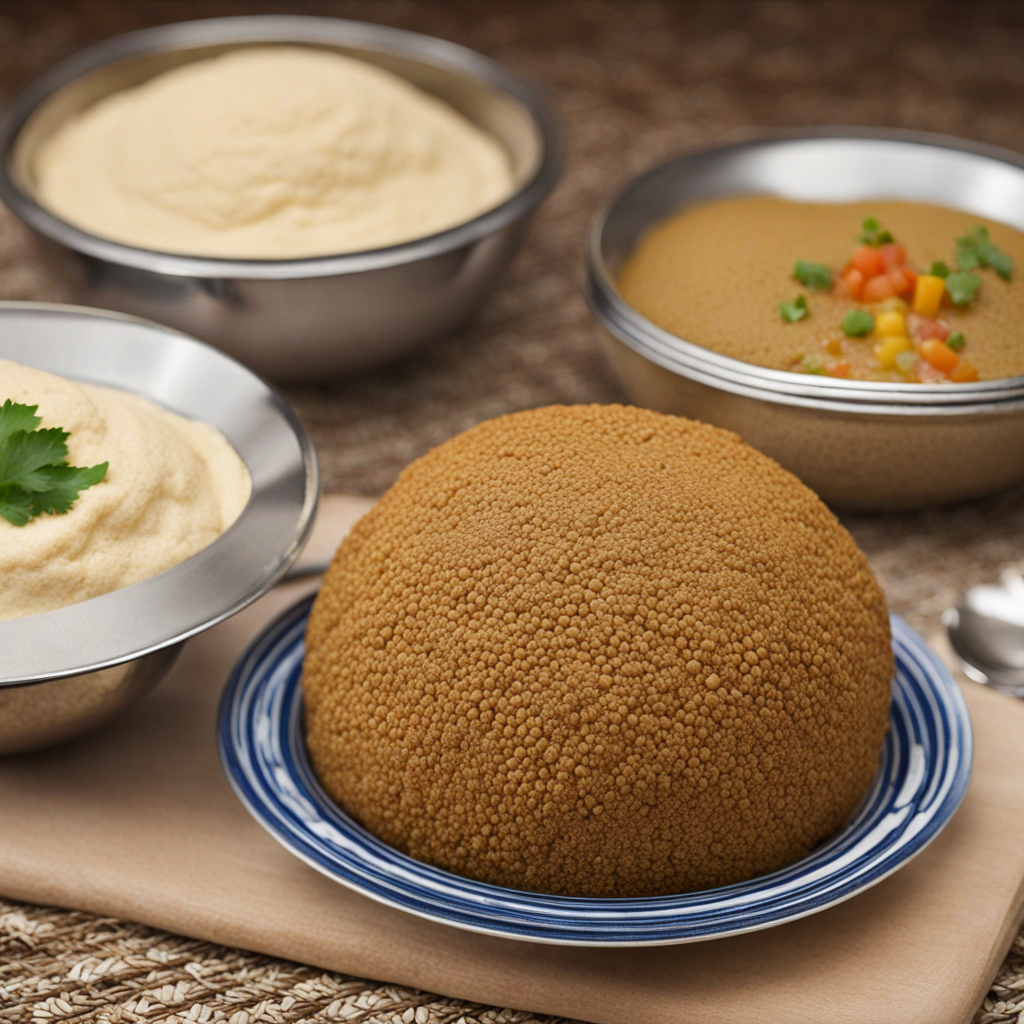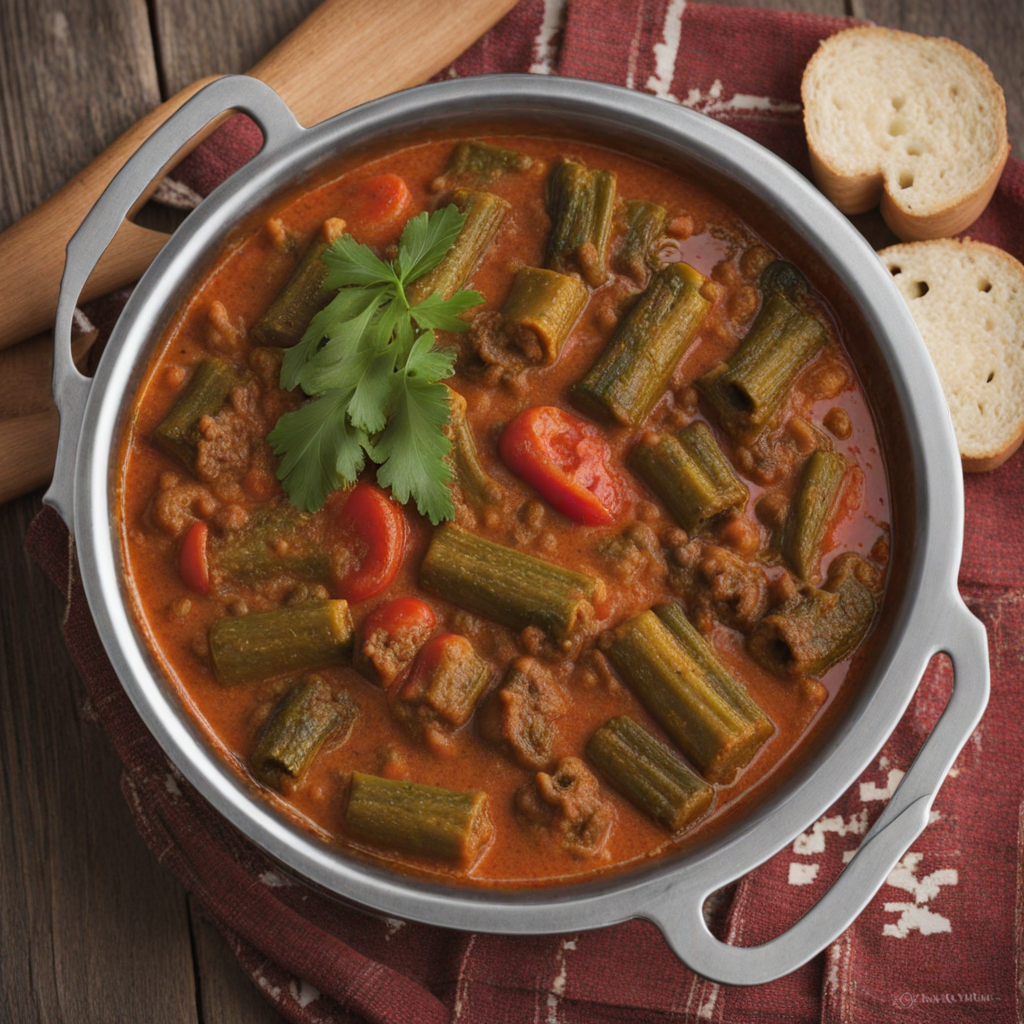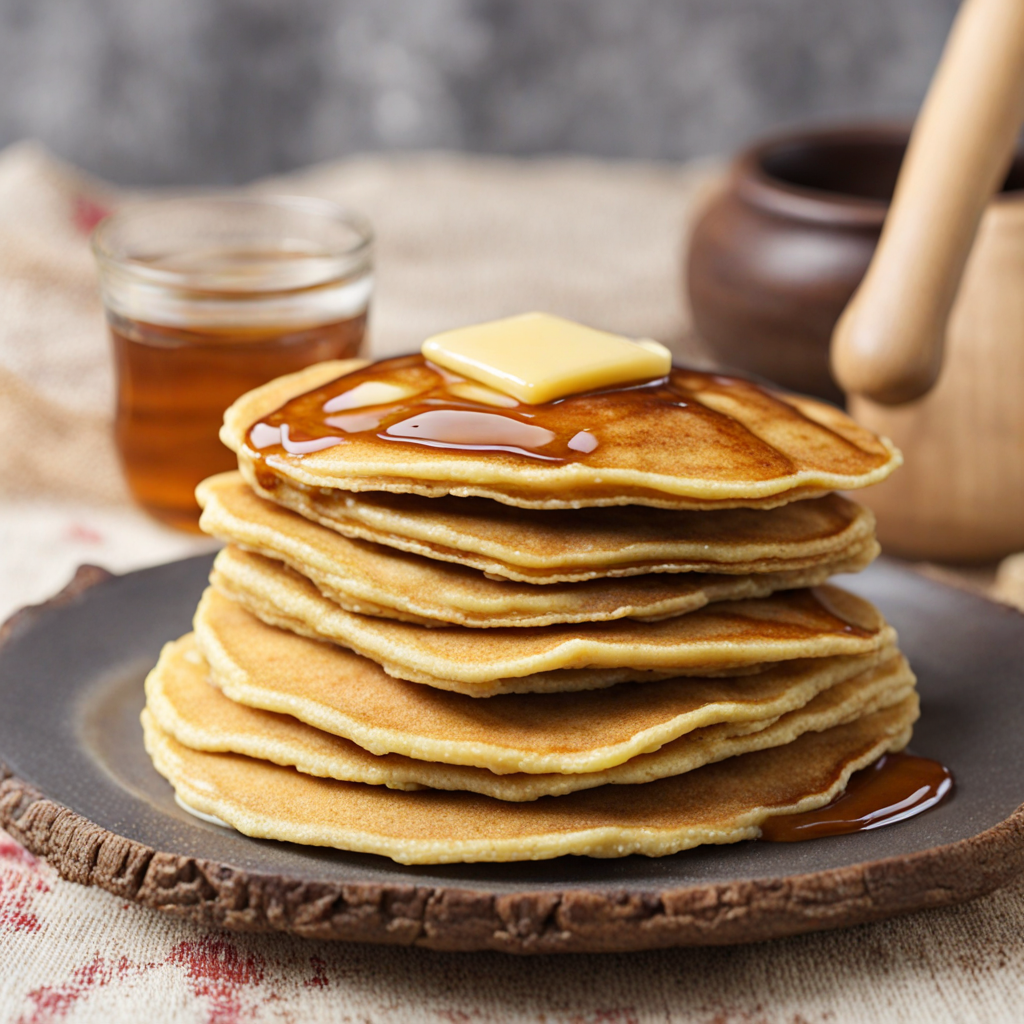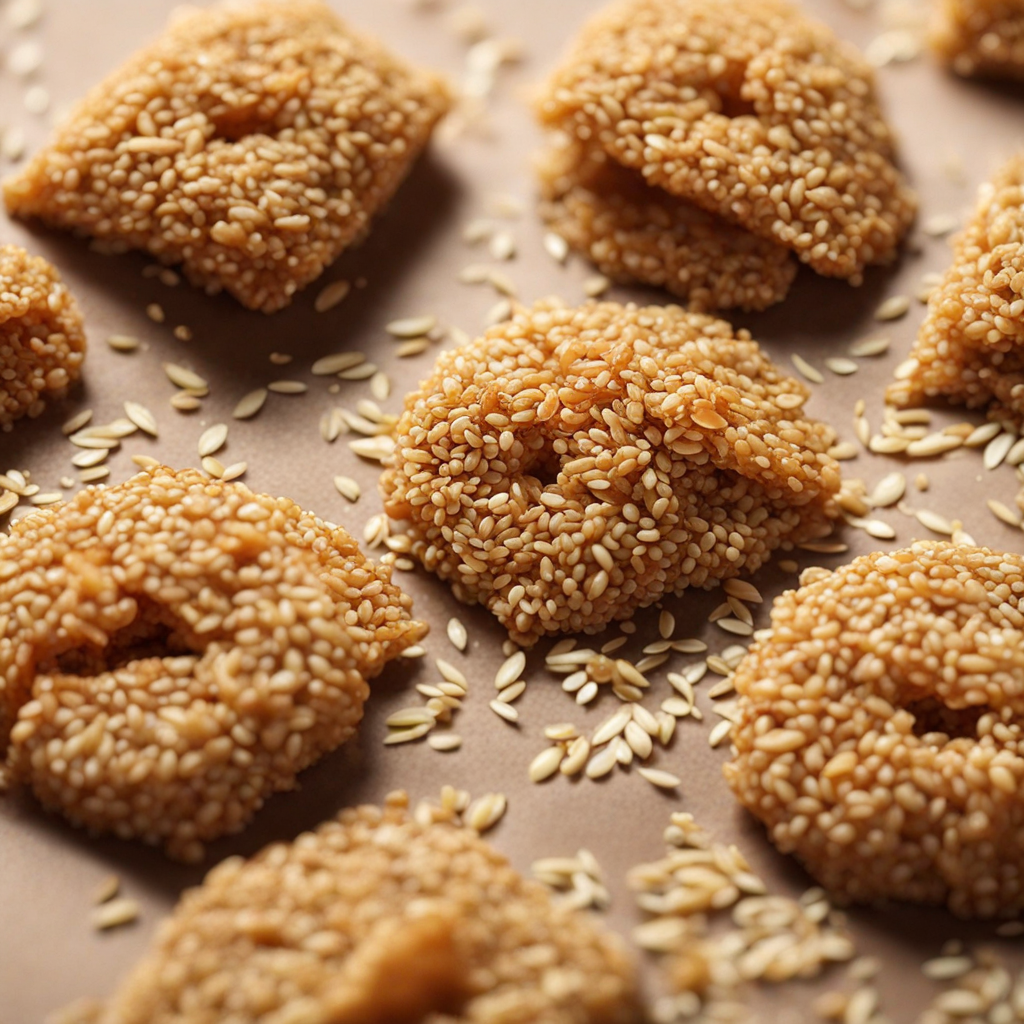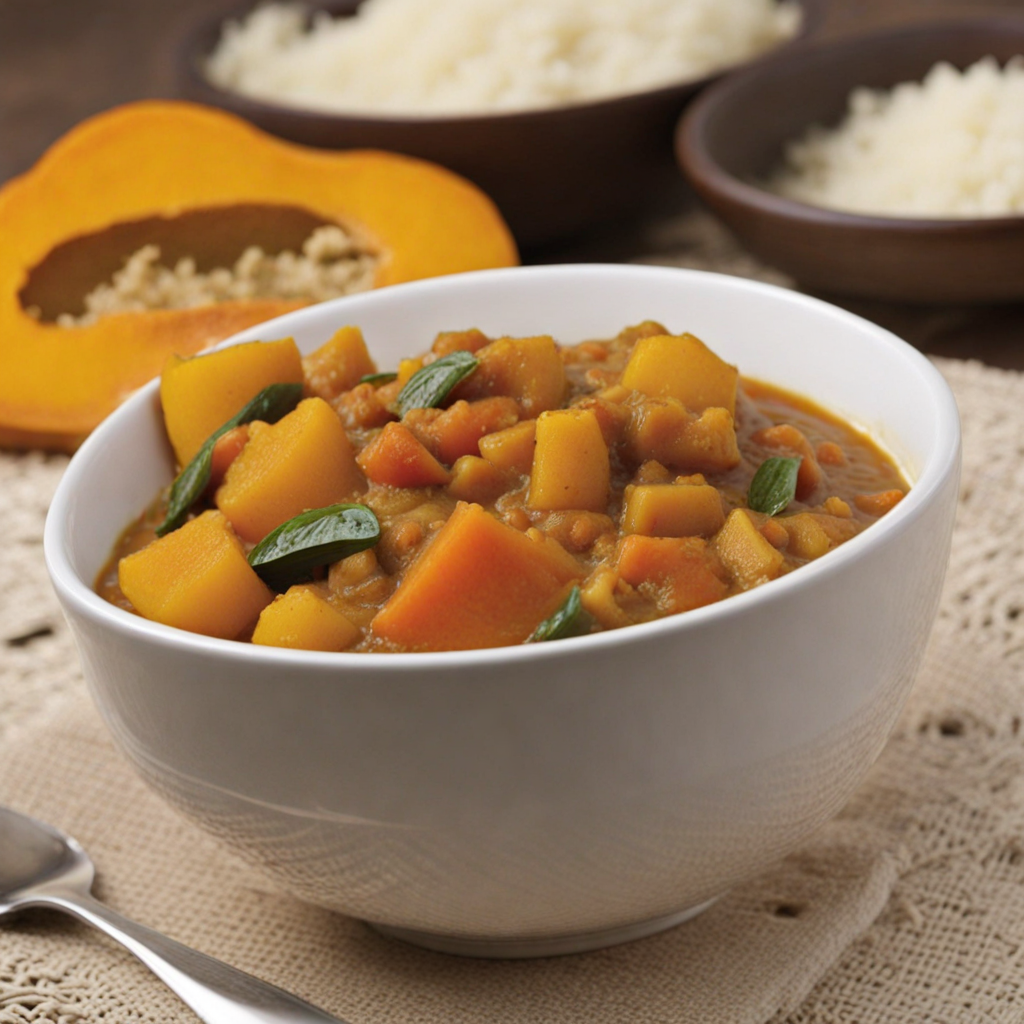Boule
Boule is a traditional dish from Chad, characterized by its unique texture and hearty flavors. Made primarily from millet or sorghum flour, this dish is formed into small, round balls that are steamed or boiled. The resulting texture is soft yet slightly chewy, making it a delightful base for various accompaniments. Often enjoyed as a staple food, Boule is deeply rooted in the cultural practices of Chadian cuisine, reflecting the agricultural heritage of the region and the importance of grains in everyday meals. Typically served with rich sauces or stews, Boule pairs well with a variety of ingredients, including meats, vegetables, and legumes. Common pairings include spicy tomato sauces, peanut stews, or even grilled meats, which add layers of flavor and complexity to the dish. The combination of the subtly sweet millet and the robust, spicy sauces creates a harmonious balance that tantalizes the taste buds and leaves a lasting impression. In Chad, Boule is not just a meal; it is often a communal experience, shared among family and friends during gatherings. The act of breaking bread together fosters a sense of unity and celebration, making it a cherished part of Chadian culture. Whether you're enjoying it at a local eatery or preparing it at home, Boule invites food lovers to explore the rich culinary traditions of Chad and discover a taste that is both comforting and uniquely satisfying.
How It Became This Dish
The History of بولي (Boli) in Chad Boli, a traditional dish from Chad, is a testament to the rich tapestry of culinary practices that reflect the nation’s cultural heritage and agricultural bounty. This staple, made primarily from roasted and mashed plantains, holds a significant place in Chadian cuisine, embodying both the historical and social fabric of the region. #### Origins The roots of boli can be traced back to the indigenous communities of Chad, particularly among the Sara and other ethnic groups that inhabit the southern regions of the country. The plantain, the key ingredient in boli, is believed to have originated in Southeast Asia and was brought to Africa through trade routes centuries ago. Its adaptability to various climates allowed it to flourish in the fertile lands of Chad, becoming a staple food for many communities. Historically, plantains were cultivated by local farmers, who engaged in subsistence agriculture. They would plant, harvest, and prepare plantains not just for daily sustenance, but also for community gatherings and celebrations. As a versatile ingredient, plantains can be prepared in numerous ways, but the method of roasting and mashing them into boli reflects a unique culinary tradition that emphasizes both flavor and texture. #### Cultural Significance Boli is more than just a dish; it is a cultural symbol representing unity, tradition, and the agrarian lifestyle of the Chadian people. It is often served during significant communal events, including weddings, religious festivals, and family gatherings. The preparation of boli is typically a communal activity, involving family members and neighbors who come together to roast the plantains over an open fire, fostering a sense of community and cooperation. In Chadian culture, food plays a pivotal role in social interactions. Boli is often accompanied by various sauces, such as groundnut sauce or a spicy pepper sauce, which enhances its flavor and complements the dish’s starchy base. This practice of communal eating and sharing food reflects deeper social bonds and is an integral part of hospitality in Chadian society. Visitors are often greeted with boli, symbolizing welcome and generosity. Moreover, boli has gained symbolic meaning in the context of resilience and adaptability. In times of economic hardship or food scarcity, it serves as a reminder of the resourcefulness of the Chadian people, who have honed their culinary practices to rely on locally available ingredients. The dish embodies the spirit of survival and creativity, showcasing how traditional foods can adapt to changing circumstances. #### Development Over Time As Chad has evolved politically, socially, and economically, so too has the preparation and consumption of boli. The dish has remained a constant presence on the dining tables of many Chadians, but its preparation has also adapted to modern influences. In urban areas, where access to traditional cooking methods may be limited, people have begun to use electric stoves or gas burners instead of open flames. While some purists argue that this changes the dish's flavor profile, many appreciate the convenience that modern technology brings. The globalization of food culture has also introduced new influences to boli. Chefs and home cooks alike have begun experimenting with the dish, incorporating various ingredients and forms of preparation. For instance, the addition of spices from other cuisines, such as cumin or coriander, has occasionally found its way into the accompanying sauces, showcasing the blend of tradition and modernity. Moreover, as awareness of global food trends increases, there has been a rising interest in traditional African foods, including boli, among both Chadians and international audiences. Efforts to promote local cuisine have led to a resurgence in the appreciation of boli, not only as a traditional dish but as a representation of Chadian identity on the global culinary stage. Food festivals and cultural events often feature boli, further solidifying its status as a cultural emblem. In recent years, there has also been a growing emphasis on food sustainability and local sourcing. This movement resonates with the traditional practices of many Chadian communities that have long relied on local agriculture. By focusing on sustainable farming methods and preserving traditional recipes, the future of boli appears bright. It continues to be a unifying dish that connects Chadians to their heritage while paving the way for innovative culinary practices. #### Conclusion Boli is more than just a dish; it is a narrative of Chad’s agricultural history, cultural significance, and culinary evolution. From its humble origins rooted in the plantain fields of southern Chad to its role as a symbol of community and resilience, boli encapsulates the essence of Chadian identity. As the world becomes more interconnected, the dish stands as a reminder of the importance of preserving traditional food practices while also embracing innovation. In a global landscape where food often serves as a bridge between cultures, boli emerges not only as a delicious staple but as a powerful representation of the Chadian spirit—resilient, communal, and rich in history. Whether enjoyed at a bustling market, a family gathering, or a festive celebration, boli continues to nourish both the body and the soul, reminding us of the importance of tradition amid the ever-changing tides of modernity.
You may like
Discover local flavors from Chad


